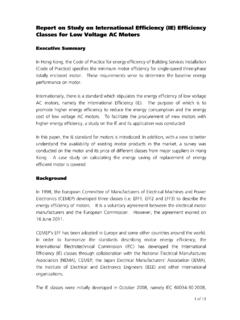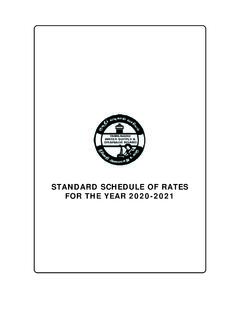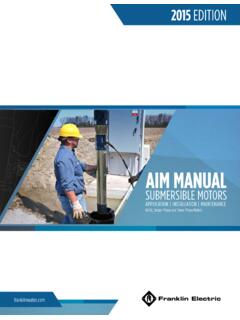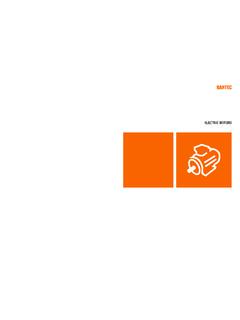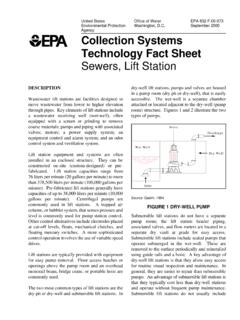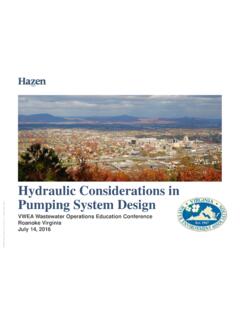Transcription of Heater Element Specifications - Rockwell Automation
1 Technical DataHeater Element SpecificationsBulletin Number 592 Additional ResourcesThese documents contain additional information concerning related products from Rockwell can view or download publications at To order paper copies of technical documentation, contact your local Allen-Bradley distributor or Rockwell Automation sales picPageDescription2 Heater Element Selection Procedure2 Index to Heater Element Selection Tables5 Heater Element Selection Tables6 ResourceDescriptionIndustrial Automation Wiring and Grounding Guidelines, publication general guidelines for installing a Rockwell Automation industrial Certifications website, declarations of conformity, certificates, and other certification Application on Bulletin 100/500/609/1200 Line StartersHeater Element Specifications2 Rockwell Automation Publication 592-TD010B-EN-PType W Heater ElementsEutectic Alloy overload Relay Heater Elements Type J CLASS 10 Type P CLASS 20 (Bul.)
2 600 ONLY) Type W CLASS 20 Type WL CLASS 30 DescriptionOverload Relay Class DesignationUnited States Industry Standards (NEMA ICS 2 Part 4) designate anoverload relay by a class number indicating the maximum time inseconds at which it will trip when carrying a current equal to 600percent of its current Class 10 overload relay will trip in 10 seconds or less at a currentequal to 600 percent of its Class 20 overload relay will trip in 20 seconds or less at a currentequal to 600 percent of its Class 30 overload relay will trip in 30 seconds or less at a currentequal to 600 percent of its standard overload relay protection is provided usingType W Heater elements for the 500 Line.
3 This provides Class 20operation and is recommended for General Applications may require Class 10 or Class 30 overloadrelays. Class 10 overload relays are often used with hermeticmotors, submersible pumps, or motors with short locked rotor timecapability. Class 30 overload relays should be used with motorsdriving high inertia loads, where additional accelerating time isneeded and the safe permissible locked rotor time of the motor iswithin Class 30 performance applications requiring Class 30 protection, Type WL heaterelements are available. To order, use the applicable Type Wselection table, follow the Heater Element selection instructions andchange the W in the Heater Type Number to WL.
4 For applications requiring Class 10 overload relays, Type J elementsare available. See page 1-170 for Index to Heater Element Element SelectionThe Full Load Amperes listed in the tables are to be used forheater Element selection. For Type J and W Heater Elements, therating of the relay in amperes at +40 C (+104 F) is 115% of the Full Load Amperes listed for the Heater Type Number . For TypeWL Heater Elements, the rating is 120% of the Full Load Amperes listed for the Heater Type Number. Refer to the motor nameplate for the full load current, the servicefactor, and/or the motor classification by application andtemperature this motor nameplate information, the application rules, and the Full Load Amperes listed in the proper table (see Index) todetermine the Heater Type Number.
5 The following is for motors rated for Continuous Duty:For motors with marked service factor of not less than , ormotors with a marked temperature rise not over +40 C(+104 F), apply application rules 1 through 3. Apply applicationrules 2 and 3 when the temperature difference does not exceed+10 C (+18 F). When the temperature difference is greater, Same Temperature at the Controller and the motor Select the Heater Type Number with the listed Full LoadAmperes nearest the full load value shown on the Temperature at the Controller than at the motor Ifthe full load current value shown on the motor nameplate isbetween the listed Full Load Amperes , select the Heater TypeNumber with the higher Temperature at the Controller than at the motor Ifthe full load current value shown on the motor nameplate isbetween the listed Full Load Amperes.
6 Select the Heater TypeNumber with the lower motors with Marked Service Factor of less than , selectthe Heater Type Number one rating smaller than determinedby the rules in paragraphs 1, 2 and rated for Intermittent Duty Please contact your localRockwell Automation sales office or Allen-Bradley distributorfor additional Element Selection Procedure When Temperatureat Controller is 10 C ( 18 F) Greater than Temperatureat MotorAmbient Temperature CorrectionThe ambient temperature at the motor and controller is the same inmost applications. Under this condition, the overload relay isdesigned to sense changes in ambient temperature and also protectthe motor over a range of that a motor can safely deliver varies with temperature.
7 Themotor can deliver its full rated horsepower at an ambienttemperature specified by the motor manufacturers, normally +40 C(+104 F). At high temperatures (higher than +40 C) less than 100%of the normal rated current can be drawn from the motor withoutshortening the insulation life. At lower temperatures (less than+40 C) more than 100% of the normal rated current could bedrawn from the motor without shortening the insulation life. Thus,there is an inverse relationship between motor ambient temperatureand motor output. In any motor , allowable output decreases as theambient temperature is raised and vice : Heater Element Type W/WL does not currently meet the material restrictions related to EU ROHSH eater Element SpecificationsFor Application on Bulletin 100/500/609/1200 Line StartersFor Bulletin 512, Size 2, again refer to Table 153.
8 The value of falls between A (W64) and A (W66). Since is closerto specify the W64 Heater 3: Starter Lower than +40 C motor ,AC, squirrel cage motor , 25 Hp, 460V, 60 Hz, 1800 rpm. FLC of 34A, service factor Type W Heater elements, Temperature atstarter +25 C, Temperature at motor +55 , consider a case where both the controller and the motor areat ambient temperatures other than +40 C. In Example 3 thetemperature of the controller is +25 C ambient (cooler) while thetemperature of the motor is +55 C ambient (warmer). As statedearlier, a motor running in a warmer environment will deliver lessthan its normal horsepower.
9 This requires downsizing the heaterelement rating. The controller in this case is in a cooler environmentwhich prevents the Heater Element from heating up as much as in a+40 C ambient temperature. This also requires downsizing theheater Element rating to provide adequate protection. Thus, the neteffect of a warmer motor and a cooler controller is to furtherdownsize the Heater Element . Using the Type W temperaturecorrection curve, the correction factor in this case is:Table 153 shows that this value falls between A (W63) and (W64). Because A is closer to the requirement, select theheater Element Element Selection Procedure When Temperatureat Controller is 10 C ( 18 F) Greater than Temperatureat motor (Continued)Ambient Temperature Correction Curve (See Performance Data on page Important-3)Percent of Rated CurrentAmbient Temperature [ C ( F)] C FStandardRating Temp.
10 +40 C (104 F)Ty p e JTy p e W, W L C FWhen the temperature difference between the motor and controllerdoes not exceed +10 C the Heater elements should be selectedaccording to the directions given in the Heater Element Selection,page the temperature difference is more than +10 C an ambienttemperature correction factor should be used as part of the processfor selecting Heater elements. The ambient temperature correctioncurve shown above shows the factor by which Heater selectionrating changes with ambient temperature Element Selection ProcedureIn solving problems where ambient temperature correction isnecessary, the following simple procedure is recommended:1.










